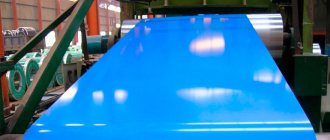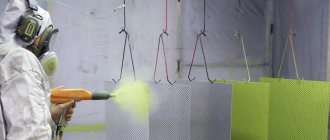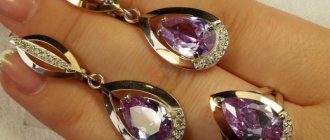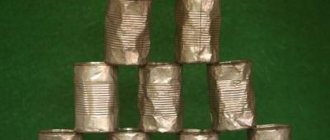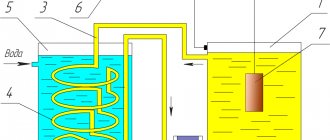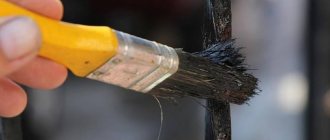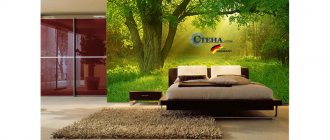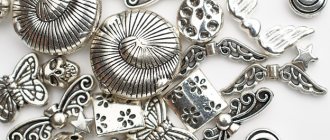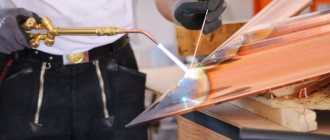- Polymer coatings: types
- Anti-friction coatings as a type of polymer
- Features of polymer coatings
- Application technology
The use of polymer coatings allows you to protect metal surfaces from corrosion, mechanical damage, external, chemical and other influences. They are powdery substances based on various resins and polymers.
VIKING (Viking)
VIKING (Viking) comes in two types: Viking in a thickness of 0.45 mm and the improved Viking E in a thickness of 0.5 mm.
VIKING 0.45 mm (Viking) is a TEXTURED MATTE coating, its thickness is 30 microns. Thanks to special methods of application and polymerization, it acquires a unique texture.
It is characterized by increased plasticity and color fastness. In production, steel sheets of 0.45-0.47 mm are used. A ten-year operational warranty is provided.
VIKING (Viking) E 0.5 mm is, accordingly, also a textured MATTE coating with a metal thickness of 0.5 mm and a polymer layer thickness of not 30 µm, but 45 µm.
Viking is the result of cooperation between the domestic company Metal Profile and the Swedish AkzoNobel. In close collaboration, it was possible to create a special F670 coating with a layer of 30 microns and a unique matte texture.
Advantages of Viking coating:
- matte surface, improving the aesthetic component of the material;
- the special texture of the polymer layer gives the metal tiles a presentable appearance;
- provides reliable protection of the metal base of the roofing material from corrosion and other negative influences.
Colors in Viking coating:
RAL 7024 (wet asphalt)
RAL 3011 (brick red)
RAL 8017 (chocolate)
RAL 6005 (dark green)
RAL 9005 (black)
VikingMP E coating
A coating with an unusual texture and a noble, status, matte surface. Fractional inclusions can be felt to the touch. The polymer is used primarily for painting fences, roofs, and building facades. The textured coating changes shades, depending on the degree of illumination. VikingMP E is a great option when you need to emphasize your individuality. The multi-component composite coating consists of polyurethane, polyester and polypropylene wax. This combination endowed the material with the following advantages:
- mechanical strength;
- plastic;
- protection from microscopic cracks;
- increased color fastness;
- protection from dirt that does not linger on the coating.
The polymer coating is resistant to temperature changes, the maximum heating temperature is +100 degrees.
Cloudy
CLOUDI (Cloudy) imitation of natural tiles A special protective polymer coating for metal, made on the basis of modified polyester.
Its thickness is 35 microns, produced by the Belgian concern ArcelorMittal. Metal tiles with Cloudy coating are produced by the MetalProfile plant.
The roofing material reliably imitates the pattern of natural ceramic tiles. The thickness of the steel base is 0.5mm.
The color scheme combines two tones - dark and light brown. The manufacturer's warranty is given for 10 years.
Advantages of Cloudy coating:
- spectacular appearance, different from monotonous colors;
- polymer layer thickness - 35 microns;
- guaranteed thickness of base metal - 0.5mm;
- two-pass application technology with a cloud effect using special equipment;
- use of proprietary additives to increase the hardness of the protective layer;
- resistance to ultraviolet rays;
- immunity to daily and seasonal temperature changes;
- increased moisture resistance.
Anti-friction coatings as a type of polymer
A special type of polymer coatings is antifriction solid lubricant coatings (ATSC). They are similar to paints, but the dye is replaced by tiny particles of solid lubricants distributed throughout the volume of the binder and solvent.
For the production of polymer ATSP, polytetrafluoroethylene (Teflon, PTFE), molybdenum disulfide, graphite and other solid lubricants are used. Both organic and inorganic materials can act as a binder: titanate, epoxy resin, acrylic, polyamide-imide, phenolic, etc. Components.
In Russia, the company is engaged in the development and production of such materials. The product line includes anti-friction solid lubricant coatings designed to solve various problems, cleaners and special solvents.
MODENGY polymer coatings - MODENGY 1010, MODENGY 1011, MODENGY 1014 and others - have proven themselves in plain bearings, sliding guides, gears, other medium- and heavily loaded sliding friction units, fasteners and threaded connections, vehicle engine parts (valve rods, piston skirts, throttle valves, main bearings, spline joints), pipeline fittings, metal and plastic elements of automotive equipment (staples, springs, hinges, locks, adjustment mechanisms, etc.), as well as other metal-polymer friction pairs, metal -rubber, metal-metal, polymer-polymer.
Advantages of MODENGY polymer coatings:
- Operability in dusty environments, vacuum and radiation
- Low coefficient of friction
- High anti-wear, anti-corrosion and extreme pressure properties
- Wide operating temperature range
- Resistant to acids, organic solvents, alkalis and other chemicals
- The ability to create a thin protective layer on parts that practically does not change their original size
MODENGY polymer coatings make it possible to effectively control friction, increase the service life and efficiency of equipment, and provide the surfaces of parts with the necessary set of protective and tribological properties.
Thanks to the use of MODENGY ATSP, plastic oils and lubricants can be completely eliminated. Solid lubrication technology allows you to create a friction unit that does not require maintenance. Anti-friction coatings are applied once and provide lubrication and protection of various parts throughout their entire service life.
AGNETA (Agneta) imitation copper surface
Double-sided (30 µm + 25 µm) coating of a steel sheet, the color of which imitates copper. It has a long-lasting shine that replicates the shades of real copper.
The thickness of the steel base is 0.5mm. The manufacturer of roofing coverings is the Metal Profile plant. The manufacturer's warranty period is 25 years.
The innovative roofing material AGNETA does not have the disadvantages characteristic of natural copper, but is not inferior to it in aesthetics and has excellent performance characteristics, including durability and maintaining a presentable appearance throughout its entire service life.
Advantages of AGNETA coating
This result of cooperation between Tata Still, AkzoNobel and Metal Profile has many advantages, which include:
- exclusive double-sided protective coating that accurately imitates the color of copper;
- unsurpassed shine, which is ensured by the introduction of special microparticles into the coating composition;
- high anti-corrosion protection provided by the use of high-grade zinc in an amount of 275 g per square meter of surface;
- resistance to UV radiation;
- resistance to temperature changes and high humidity levels.
Epoxy-polyester coating
Powder epoxy-polyester paints have attracted much attention due to the relatively low cost and good quality of the resulting coatings. Paints are produced by combining epoxy and polyester oligomer. Paints are applied to the surface using electrostatic spraying. The coatings have a beautiful appearance, good gloss and uniform coloring, and are resistant to water, aqueous solutions of salts, diluted alkalis and acids.
Table. Chemical resistance of polyesters.
| Chemical substance | Polyester | |
| 60oF (15oC) | 150oF (66oC) | |
| Aviation fuel, Gasoline Aviation | Stable | Unstable |
| Automotive gasoline, Gasoline, Auto | Stable | Unstable |
| Nitric acid 0-5%, Nitric Acid 0-5% | Stable | Stable |
| Barium Acetate | Unstable | Unstable |
| Sodium Acetate | Stable | Unstable |
| Lead Acetate | Stable | Max. at t = 160 oF (71.111 oC) |
| White liquor - pulp and paper, White Liquor - Pulp Mill | Stable | Unstable |
| Benzyl alcohol | Unstable | Unstable |
| Benzoic Acid | Stable | Unstable |
| Sodium Benzoate | Stable | Unstable |
| Ammonium Bicarbonate | Stable | Unstable |
| Potassium Bicarbonate, Potassium Bicarbonate | Stable | Unstable |
| Calcium Bisulfate | Stable | Stable |
| Sodium Bisulfate | Stable | Stable |
| Sodium bisulfite, Sodium Bisulfite | Stable | Stable |
| Hydrofluoric acid 10%, Fluoboric Acid 10% | Unstable | Unstable |
| Sodium Bromide | Stable | Stable |
| Hydrobromic acid, Hydrobromic Acid 0-25% | Stable | Unstable |
| Butylene Glycol | Stable | Stable |
| Butyl alcohol, Alcohol - Butyl | Unstable | Unstable |
| Tartaric Acid | Stable | Stable |
| Secondary Butyl Alcohol | Unstable | Unstable |
| Gall oil | Stable | Unstable |
| Hexalene Glycol | Stable | Stable |
| Hexane | Stable | Unstable |
| Heptanes, Heptanes | Stable | Unstable |
| Ammonium Hydroxide 10%, Ammonium Hydroxide 10% | Unstable | Unstable |
| Ammonium Hydroxide 20%, Ammonium Hydroxide 20% | Unstable | Unstable |
| Ammonium Hydroxide 5%, Ammonium Hydroxide 5% | Stable | Unstable |
| Calcium Hydroxide | Stable | Unstable |
| Sodium Hydroxide 0-5%, Sodium Hydroxide 0-5% | Stable | Stable |
| Sodium hydrosulfide | Stable | Unstable |
| Sodium hydrofluoride, Sodium Bifluoride | Stable | Unstable |
| Calcium Hypochlorite | Stable | Unstable |
| Sodium hypochlorite | Stable | Unstable |
| Hypochlorous Acid 0-10%, Hypochlorous Acid 0-10% | Stable | Max. at t = 104 oF (40 oC) |
| Glycolic Acid 70% | Stable | Unstable |
| Glycol-propylene, Glycol - Propylene | Stable | Stable |
| Glyconic acid, Glyconic, Acid | Stable | Unstable |
| Glycerin | Stable | Stable |
| Glucose | Stable | Stable |
| Deionized water | Stable | Stable |
| Demineralized water | Stable | Stable |
| Di-Ammonium Phosphate | Unstable | Unstable |
| Dibutyl Ether | Unstable | Unstable |
| Diesel Fuel | Stable | Unstable |
| Dimenthyl Phthalate | Unstable | Unstable |
| Carbon dioxide (carbon dioxide), Carbon Dioxide | Stable | Stable |
| Chlorine Dioxide/Air | Stable | Unstable |
| Dioctyl Phthalate | Unstable | Unstable |
| Dipropylene Glycol | Stable | Unstable |
| Distilled water | Stable | Stable |
| Sodium Di-Phosphate | Stable | Stable |
| Mercury dichloride, Mercuric Chloride | Stable | Max. at t = 212 oF (100 oC) |
| Sodium Dichromate | Stable | Stable |
| Diethylene Glycol | Stable | Unstable |
| Tannic acid | Stable | Unstable |
| Sodium iron sulfide, Sodium Ferricyanide | Stable | Stable |
| Fatty Acids | Stable | Stable |
| Isopropyl 100%, Alcohol - Isopropyl 100% | Unstable | Unstable |
| Isopropyl alcohol, Alcohol - Isopropyl | Unstable | Unstable |
| Isopropyl Palmitate | Stable | Max. at t = 180 oF (82.222 oC) |
| Potassium Aluminum Sulfate | Stable | Max. at t = 170 oF (76.667 oC) |
| Caprylic acid | Stable | Unstable |
| Barium Carbonate | Stable | Unstable |
| Potassium Carbonate, Potassium Carbonate | Stable | Unstable |
| Magnesium Carbonate | Stable | Max. at t = 160 oF (71.111 oC) |
| Sodium carbonate, Sodium Carbonate 0-25% | Stable | Unstable |
| Calcium Carbonate | Stable | Unstable |
| Alum flour, Aluminum Potassium Sulfate | Stable | Stable |
| Kerosene, Kerosene | Stable | Max. at t = 120 oF (48.889 oC) |
| Coconut oil | Stable | Unstable |
| Fluorosilicic acid 0-20%, Fluosilicic Acid 0-20% | Unstable | Unstable |
| Sodium Xylene Sulfonate | Stable | Unstable |
| Xylene, Xylene | Unstable | Unstable |
| Corn Starch, Corn Starch-Slurry | Stable | Unstable |
| Corn Sugar | Stable | Unstable |
| Corn oil | Stable | Unstable |
| Sodium Lauryl Sulfate | Stable | Stable |
| Citric acid, Citric Acid | Stable | Stable |
| Butyric acid 0-50%, Butyric Acid 0-50% | Stable | Unstable |
| Butyric acid, Oleic Acid | Stable | Stable |
| Mineral Oils | Stable | Max. at t = 180 oF (82.222 oC) |
| Lactic Acid | Stable | Max. at t = 200 oF (93.333 oC) |
| Carbon monoxide (carbon monoxide), Carbon Monoxide | Stable | Stable |
| Sodium Mono-Phosphate | Stable | Stable |
| Monochlorous acid, Chloroacetic Acid 0-50% | Unstable | Unstable |
| Sea water, Water - Sea | Stable | Stable |
| Urea, Urea | Stable | Unstable |
| Formic acid, Formic Acid 10% | Stable | Unstable |
| Soap, Soaps | Stable | Unstable |
| Naphtha | Stable | Stable |
| Naphthalene | Stable | Unstable |
| Crude Oil, Sweet | Stable | Unstable |
| Crude Oil, Sour | Stable | Unstable |
| Unrefined gasoline, Gasoline, Sour | Stable | Unstable |
| Petroleum fuel, Fuel Oil | Stable | Unstable |
| Ammonium Nitrate | Stable | Stable |
| Ferric Nitrate | Stable | Stable |
| Potassium Nitrate, Potassium Nitrate | Stable | Stable |
| Calcium Nitrate | Stable | Stable |
| Magnesium Nitrate | Stable | Max. at t = 160 oF (71.111 oC) |
| Copper Nitrate, Copper Nitrate | Stable | Stable |
| Sodium Nitrate | Stable | Stable |
| Nickel Nitrate | Stable | Stable |
| Silver Nitrate | Stable | Stable |
| Zinc Nitrate | Stable | Stable |
| Octanoic Acid | Stable | Unstable |
| Olive oil | Stable | Stable |
| Sodium orthophosphate, Trisodium Phosphate | Stable | Unstable |
| Phosphorous Pentoxide | Stable | Stable |
| Hydrogen peroxide, Hydrogen Peroxide 35% | Stable | Max. at t = 120 oF (48.889 oC) |
| Potassium Permanganate | Stable | Unstable |
| Ammonium Persulfate | Unstable | Unstable |
| Potassium Persulfate | Stable | Unstable |
| Beer | Stable | Unstable |
| Picric acid (soda alcohol), Picric Acid, Alcoholic | Stable | Stable |
| Pyridine | Unstable | Unstable |
| Sodium pyroboric acid, Sodium Tetraborate | Stable | Stable |
| Polyvinyl alcohol soda.,Polyvinyl Alcohol | Stable | Unstable |
| Polyvinyl Acetate Latex | Stable | Unstable |
| Natural gas, Gas, Natural | Stable | Unstable |
| Vegetable Oils | Stable | Stable |
| Sugar beet and cane syrup, Sugar, Beet and Cane Liquor | Stable | Unstable |
| Sucrose, Sugar, Sucrose | Stable | Stable |
| Fresh water, Water - Fresh | Stable | Stable |
| Sulfuric acid 0-30%, Sulfuric Acid 0-30% | Stable | Stable |
| Sulfuric acid 30-50%, Sulfuric Acid 30-50% | Unstable | Unstable |
| Sulfuric acid 50-70%, Sulfuric Acid 50-70% | Stable | Max. at t = 150 oF (65.556 oC) |
| Sulfurous Acid 10%, Sulfurous Acid 10% | Unstable | Unstable |
| Sodium silicate | Stable | Unstable |
| Soybean oil, Soya Oil | Stable | Stable |
| Salt water | Stable | Stable |
| Stearic Acid | Stable | Stable |
| Sulfamic acid | Stable | Unstable |
| Aluminum Sulfate | Stable | Stable |
| Ammonium Sulfate | Stable | Stable |
| Barium Sulfate | Stable | Stable |
| Ferric Sulfate | Stable | Stable |
| Potassium Sulfate, Potassium Sulfate | Stable | Stable |
| Calcium Sulfate | Stable | Stable |
| Magnesium Sulfate | Stable | Max. at t = 200 oF (93.333 oC) |
| Copper Sulfate | Stable | Stable |
| Sodium Sulfate | Stable | Stable |
| Nickel Sulfate | Stable | Stable |
| Chromium Sulfate | Stable | Stable |
| Zinc Sulfate | Stable | Stable |
| Sulfated Detergents | Stable | Unstable |
| Barium Sulfide | Unstable | Unstable |
| Hydrogen Sulfide Dry | Stable | Max. at t = 250 oF (121.11 oC) |
| Sodium sulfide | Stable | Unstable |
| Calcium sulfite | Stable | Stable |
| Sodium sulfite | Stable | Unstable |
| Superphosphoric Acid | Stable | Unstable |
| Stannic tetrachloride, Stannic Chloride | Stable | Stable |
| Sodium Thiosulfate | Stable | Unstable |
| Toluene | Unstable | Unstable |
| Brake fluid, Hydraulic Fluid | Stable | Unstable |
| Pickling Acids | Stable | Stable |
| Tridecylbenzene Sulfonate | Stable | Unstable |
| Sodium Tripolyphosphate | Stable | Unstable |
| Trichloroacetic acid 50%, Trichloro Acetic Acid 50% | Stable | Unstable |
| Carbonic acid | Stable | Stable |
| Vinegar, Vinegar | Stable | Stable |
| Acetic acid 0-25%, Acetic Acid 0-25% | Stable | Max. at t = 125 oF (51.667 oC) |
| Acetic acid 25-50%,Acetic Acid 25-50% | Stable | Unstable |
| Formaldehyde | Stable | Unstable |
| Ammonium Phosphate | Unstable | Unstable |
| Phosphoric Acid Fumes | Stable | Stable |
| Phosphoric Acid | Stable | Stable |
| Phthalic Acid | Stable | Stable |
| Hydrogen Fluoride, Vapor | Stable | Max. at t = 95 oF (35 oC) |
| Copper Fluoride | Unstable | Unstable |
| Fluorosilicic acid, Hydrofluosilicic Acid 10% | Unstable | Unstable |
| Cottonseed Oil | Stable | Unstable |
| Calcium Chlorate | Stable | Stable |
| Sodium Chlorate | Stable | Unstable |
| Zinc Chlorate | Stable | Stable |
| Aluminum Chloride | Stable | Max. at t = 120 oF (48.889 oC) |
| Barium Chloride | Stable | Max. at t = 200 oF (93.333 oC) |
| Ferric Chloride | Stable | Stable |
| Cadmium Chloride | Stable | Unstable |
| Potassium Chloride, Potassium Chloride | Stable | Stable |
| Calcium Chloride | Stable | Stable |
| Magnesium Chloride | Stable | Max. at t = 220 oF (104.44 oC) |
| Copper Chloride | Stable | Stable |
| Sodium Chloride | Stable | Unstable |
| Nickel Chloride | Stable | Unstable |
| Stannous Chloride | Stable | Stable |
| Mercury chloride, Mercurous Chloride | Stable | Max. at t = 212 oF (100 oC) |
| Chlorine -Wet Gas | Unstable | Unstable |
| Chlorine - Dry Gas | Stable | Unstable |
| Hydrogen Chloride, Wet Gas | Unstable | Unstable |
| Sodium chlorite, Sodium Chlorite 25% | Stable | Unstable |
| Chlorine Water | Unstable | Unstable |
| Copper Cyanide | Unstable | Unstable |
| Sodium cyanide | Stable | Unstable |
| Hydrocyanic acid | Stable | Unstable |
| Cyclohexane | Stable | Unstable |
| Oxalic acid | Stable | Stable |
| Sodium Electrolyte, Sodium Solutions | Stable | Unstable |
| Ethylene Glycol | Stable | Stable |
| Ethyl gasoline, Gasoline, Ethyl | Stable | Unstable |
PurMan
PURMAN (PurMan) is a new product in the range of polyurethane coatings, its thickness is 50 microns. PURMAN combines the advanced developments of the Metal Profile company, which has been promoting high-tech products on the domestic market for two decades - the result of cooperation with leading manufacturers of paintwork on the world market.
High resistance to corrosion is achieved by using an improved multilayer formula, which includes class 1 zinc 275 g/m2, as well as aluminum and zirconium! And additives such as polyamide granules increase the reliability of protection and make it possible to achieve greater expressiveness of the texture of the material.
The steel thickness of this material is 0.5 mm. The products are made in unique colors that are only available in this coating and RAL colors. The MetalProfile plant, which produces metal tiles and profiled sheets coated with PurMan, provides a guarantee for its products for a period of 20 years.
Advantages of PurMan coating:
- aesthetic glossy surface;
- thickness of the protective layer 50 µm;
- guaranteed thickness of the steel base - 0.5mm;
- full adaptation to Russian climate conditions;
- rich palette of colors;
- increased strength and resistance to mechanical stress;
- immunity to sunlight;
- optimal combination of price and quality.
This product is the brainchild of the MetalProfile concern, a development created specifically for use in the difficult conditions of the Russian climate.
The strength of the material, reinforced with polyamide granules, makes it easier to install, install and use. The introduction of additional layers in the form of zirconium and aluminum oxides makes it possible to maintain a bright rich color for the entire period of operation and increases the resistance of the protective layer to UV rays.
The protective and decorative qualities of the PURMAN material, reproducing the complex effect of all environmental conditions, confirmed that the PURMAN coating in terms of performance characteristics is superior to coatings of a lower class made of polyester or lightweight polyurethane.
Features of polymer coatings
There are quite serious requirements for polymer coatings. First, they must have very high adhesion to the surface, since they bind to the metal base at the molecular level, rather than simply coating it. The second is resistance to various deformations, which does not allow the coating to collapse under mechanical stress.
Thirdly, such materials should not lose their properties under prolonged exposure to water, alkalis, solvents, various chemicals, high temperatures, and UV radiation. If the coating meets all these requirements, its scope of application expands significantly.
Advantages:
- Possibility to choose almost any color
- High adhesion
- Environmental friendliness
- High strength
- Heat resistance
- Resistance to aggressive substances and water
- Impenetrability
- Dielectric properties
- Aesthetics
Let's talk about the disadvantages of polymer coatings. The main one is the high cost, which consists of the amount of material and the use of special equipment. But, along with this, the polymer layer is applied for the entire service life, and also does not require updating or touching up the layer. Therefore, the payback of such coverage occurs very quickly.
Difficult removal from the surface, at the same time, is also a disadvantage. It is very difficult to clean the bases of parts from them, since polymer compounds are poorly susceptible to mechanical stress and chemicals. Due to the fact that there are no special cleaners for removing such materials, it will not be possible to simply erase such a layer. This is also due to the connection of the polymer coating with the surface at the molecular level. To remove it, you will need a special tool.
You cannot apply polymer coatings yourself. The technological process includes the use of certain equipment that can only be found in enterprises or specialists engaged in performing such work. If you try to apply using improvised means, nothing will work, and the funds spent will be wasted.
Well, the last disadvantage is that the application of polymer coatings, except anti-friction ones, is only possible on metals that conduct electricity well. This is due to the use of magnetic induction technology to create a coating layer.
Pural coating
Pural (aka armakor) is a relatively new type of material, made on the basis of polyurethane, to which acrylic and polyamide are added. Even though the coating is applied with a thickness of about 50 microns , it is very strong and durable.
Advantages:
- durability up to 50 years;
- preservation of decorative and protective qualities throughout the entire service life;
- resistance to mechanical loads, temperature changes, negative influences of natural and man-made nature.
drawback - the high price, but in areas with high humidity, polluted air and other factors that are aggressive to metal, this is almost the only option.
Polyester cover
Polyester is the most commonly used coating for corrugated sheets. It is cheap, durable, and well resistant to negative environmental factors.
Advantages:
- UV resistance – the material does not fade in the sun and retains its original appearance for a long time;
- corrosion resistance;
- resistance to temperature changes;
- low price.
The main disadvantage is the small thickness of the applied coating, so it may not be particularly durable. To ensure the quality of the material, you need to carefully bend the corner of the sheet: if no cracks or small folds appear, then the corrugated sheet will last a long time.
The material coated with matte polyester wins in terms of durability. The technology involves applying the coating unevenly. The thickness of the spraying will be slightly greater than in the case of glossy polyester, and therefore the strength properties increase. Such a profiled sheet often receives a surface simulating brickwork, wood or stone.
general information
Metal tiles are roofing materials made from sheet steel. To protect steel from rust, it is coated with several types of compounds. Passivation is required: zinc or aluzinc is applied, which stops corrosion. The more it is, the better the rolled steel is protected. The passivation layer itself also needs protection: if left in the open air, it will gradually deteriorate. To prevent this from happening, primers and polymer compounds are used. The latter form the surface of the metal tile, determine its color, as well as what it will be: glossy or matte, with or without texture.
The basis of the polymer layer can be polyester or polyurethane with polyamide. Polyurethane is considered more durable and strong, but its price is higher. Polyester has a lower price, and its service life depends on a number of characteristics (the main one is thickness). Both polyester and polyurethane coatings can be matte or glossy. This only affects the appearance of the roof: in terms of the main characteristics, matte and glossy coatings do not differ significantly from each other. If the surface is matte, it can be textured, and this can look unusual and improve the appearance of the roof. Glossy compounds usually have a smooth surface. However, the degree of gloss may vary.
Each metal tile manufacturer offers its own “versions” of both polyurethane and polyester coatings.
What else to consider when choosing corrugated sheets?
When choosing corrugated sheeting with a polymer coating, it is also worth considering some other parameters, namely:
- material type . For the construction of internal partitions and cladding of buildings, wall corrugated sheeting (C) with a profile height of 8-35 mm is used. Roofing corrugated sheeting (H) is used in the construction of roofs, fences, and in the construction of non-residential buildings (hangar, garage, etc.), the profile height is more than 44 mm, it is a rigid and durable material. Load-bearing corrugated sheeting (NS) is a universal material that is suitable both for organizing the roof and for the construction of structures or for their finishing;
- The height of the wave affects the strength of the sheet, and the higher the height, the higher the strength. This parameter is indicated in the marking, for example, C8 is a wall profile with a wave height of 8 mm;
- size . The width of corrugated sheets ranges from 113-120 cm, length - 0.3-12 m. The choice depends on the size and geometry of the object that needs to be built;
- surface quality . The polymer coating must be free of scratches, dents and other defects; the sheets themselves should not have burrs at the edges;
- guarantee . If a manufacturer claims that the durability of its products is 20 years, and gives a guarantee for 6 months, then this should alert you. It is best to purchase profiled sheets directly from the manufacturer or from its official dealers. Give preference to large ones class=”aligncenter” width=”800″ height=”484″[/img]
In conclusion, we note that when choosing corrugated sheeting for a fence, it is a good idea to pay attention to the double-sided material - a polymer coating is applied to it on both sides, which ensures maximum aesthetics and durability.
The article was written for the site.
